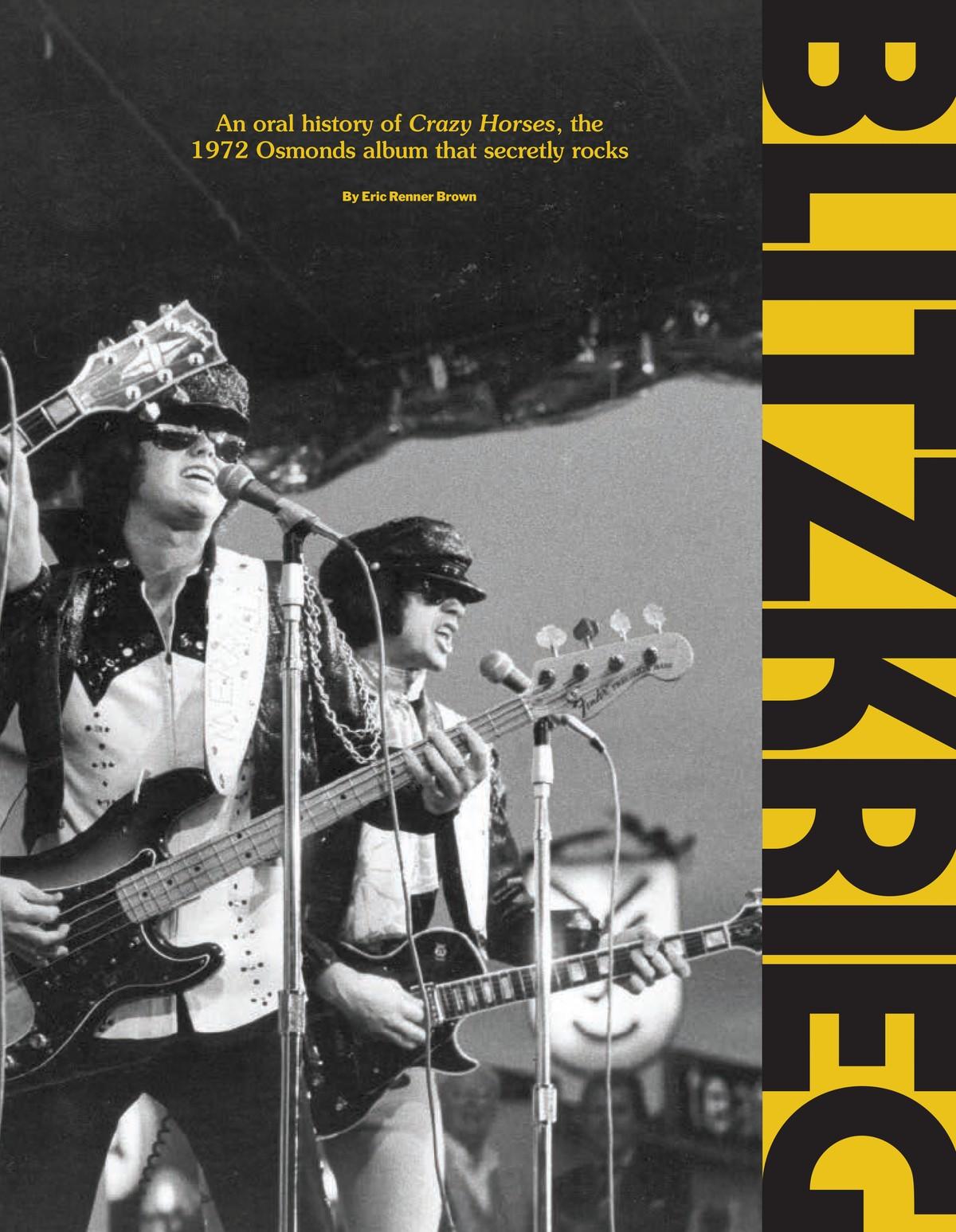BUBBLEGUM BLITZKRIEG
An oral history of Crazy Horses, the 1972 Osmonds album that secretly rocks.


Before you do anything, look up “Osmonds Crazy Horses” on YouTube. All set? Good, let’s get started.
A decade of goody-goody music can wear a boy band down.
Throughout the ’60s, the Osmond brothers—Alan, Wayne, Merrill, Jay, and Donny, who ranged from 4 to 13 when they made their TV debut in 1962—had impressed viewers with tight barbershop harmonies and snappy dance routines as clean-cut, precociously talented regulars on The Andy Williams Show. But independence beckoned, and after a handful of records released in connection with the variety show, the five Utah-born brothers struck out on their own.
“We wanted to be our own thing,” eldest brother Alan recalls. “We were getting teen magazine recognition and we wanted to be musicians. We wanted to write our own music. We about starved to death that first year.”

